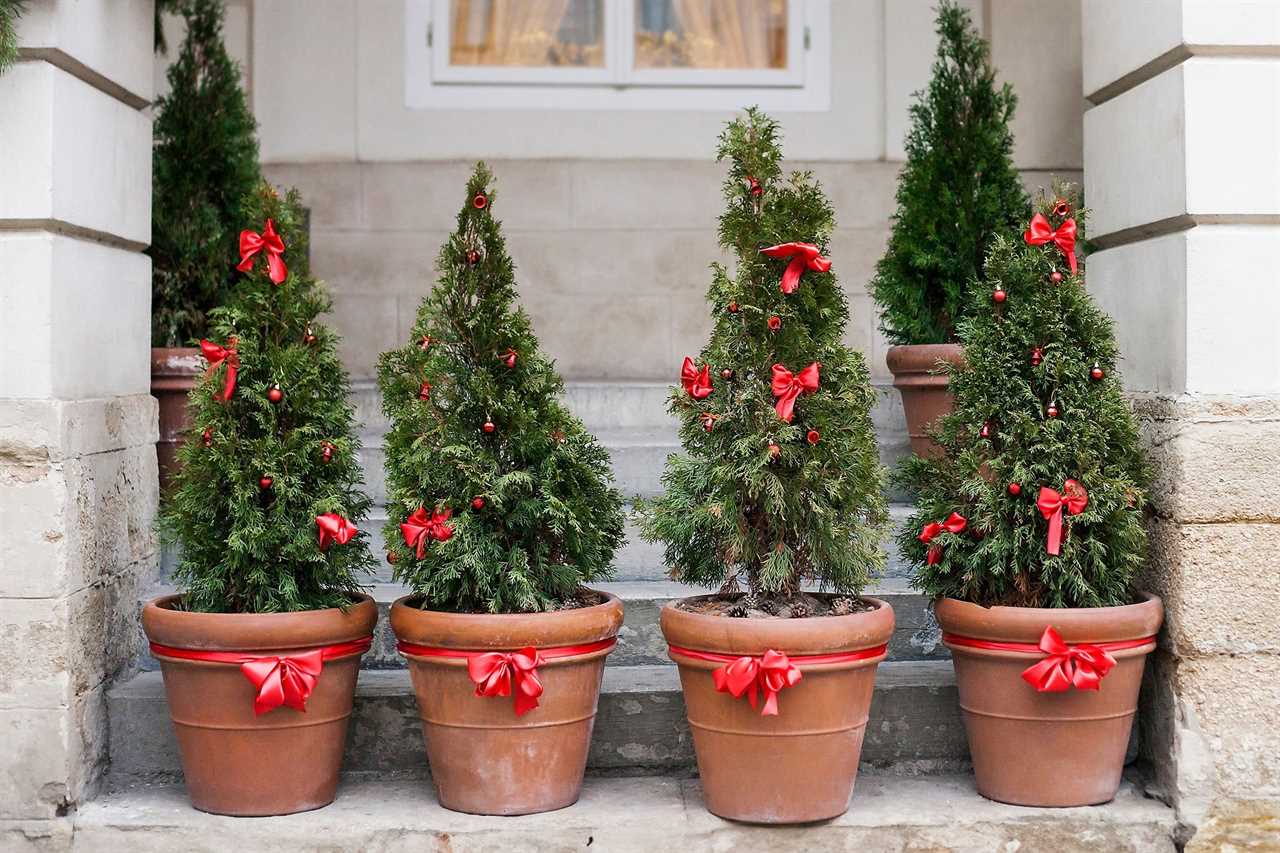Author Marcia Layton Turner has fond memories of several Christmas seasons when her family did something so unique she considers it quirky. They decorated a live Christmas tree for the holiday, planted it in their backyard afterward, then dug it up the next few years to use for decor.
“When I was around 10 years old, my parents discussed how they didn’t like throwing away the tree at the end of the season,” she says. “Reusing the tree was also a nod to their desire to save money.”
Once the tree got to be about eight feet tall, it no longer fit inside, so they left it in the ground. It may still be there.
The idea of planting your Christmas tree after the holidays is becoming an attractive option for many. These living Christmas trees, with their roots still attached, and are often called “balled and burlapped,” because the root balls are wrapped in burlap or other fabric.
Read on to learn the benefits and challenges of choosing a living Christmas tree, where to find one, how to care for it, and what to do with it after the holiday.
Why Buy a Living Christmas Tree?
Living Christmas trees are beneficial during and after the holidays. They create long-lasting memories because your family enjoys them for years to come. Once replanted, they sequester carbon to address climate change and provide shade and habitat for wildlife, according to the North Carolina State Extension.
Other environmental benefits include minimizing waste and reducing deforestation associated with traditional Christmas trees. And according to Lindsey Hyland, a landscaper and founder of Urban Organic Yield, another perk is “the delightful fresh pine scent that fills your home, truly bringing the spirit of Christmas indoors.”
However, living Christmas trees also come with some challenges. They’re heavy because of the root ball, hard to set up and care for, more expensive than traditional trees (real or artificial) and don’t last as long indoors.
“As a landscaper, I have seen firsthand how these beautiful evergreen trees can quickly become an added burden for homeowners,” Hyland says. “One of the main drawbacks is the extra care that is required to keep a living Christmas tree alive during and after the holiday season. They need to be regularly watered and kept in a cool environment to survive.”
Where To Buy Living Christmas Trees
You can find a Christmas tree with roots at nurseries, garden centers, online retailers and specialized tree farms. “Local nurseries often offer a wide selection of living Christmas trees, so I’d recommend starting there,” Hyland says.
In some regions, Hyland says, renting living Christmas trees is a budding trend. “Once the festivities wrap up, these trees are returned, where they’re cared for until the next season,” she says. “It’s a unique and sustainable way to enjoy the holiday spirit while also contributing to the environment’s well-being.”
The Living Christmas Company in Southern California rents trees. Search in your area for nearby options.
How to Care for a Living Christmas Tree

Fern Berg, founder of Tree Vitalize, wants people to understand the importance of a care plan.
“Your tree is a creature of the outdoors and has likely been growing outside right up until the time that you purchased it,” she says. “This means you need to gradually acclimate it before bringing it indoors, and likewise when you take it back outside after Christmas is over.”
Berg suggests the following steps:
Acclimate your tree for the indoors
- Keep it in a sheltered and shaded area outside for a few days after purchase.
- Move it into a cool area of your home, like a garage or enclosed porch, for one to two days.
Set up the tree indoors
- Set up the tree in a cool spot indoors away from heat or direct sunlight.
- Water the tree every two to three days, but do not flood it.
- Monitor the soil moisture level and needle condition to prevent the tree from drying out.
- Limit the amount of indoor time to two weeks. No more.
Acclimate your tree for the outdoors
- After the holiday, reverse the process so your tree adjusts to being back outside.
- Move it into the transitional area of your home for 48 hours.
- Then move it to a sheltered outdoor area for a few days to gradually introduce it to more sun and wind.
- Monitor the soil moisture level and look for signs of stress, like browning or dropping needles.
- Plant the tree outdoors. If this isn’t an option right away, that’s OK. Outside, the tree can still function as a sanctuary for wildlife throughout the winter until the ground thaws and you can plant it.
How to Plant a Living Christmas Tree
The joy of a living Christmas tree is replanting it. For the tree to be successful, Berg recommends choosing one suitable for your growing zone. Checking the growing requirements, like soil and light conditions, and make sure it will fit in your yard given its maximum height.
Did you miss our previous article...
https://rsssuperfeeds.com/life-hacks/10-charming-farmhouse-laundry-room-ideas






